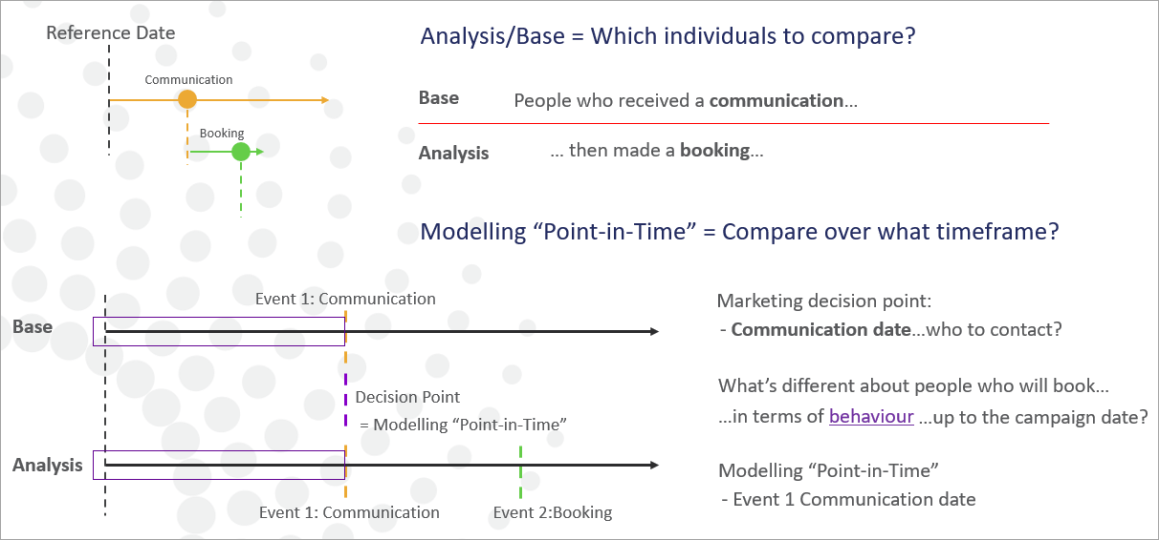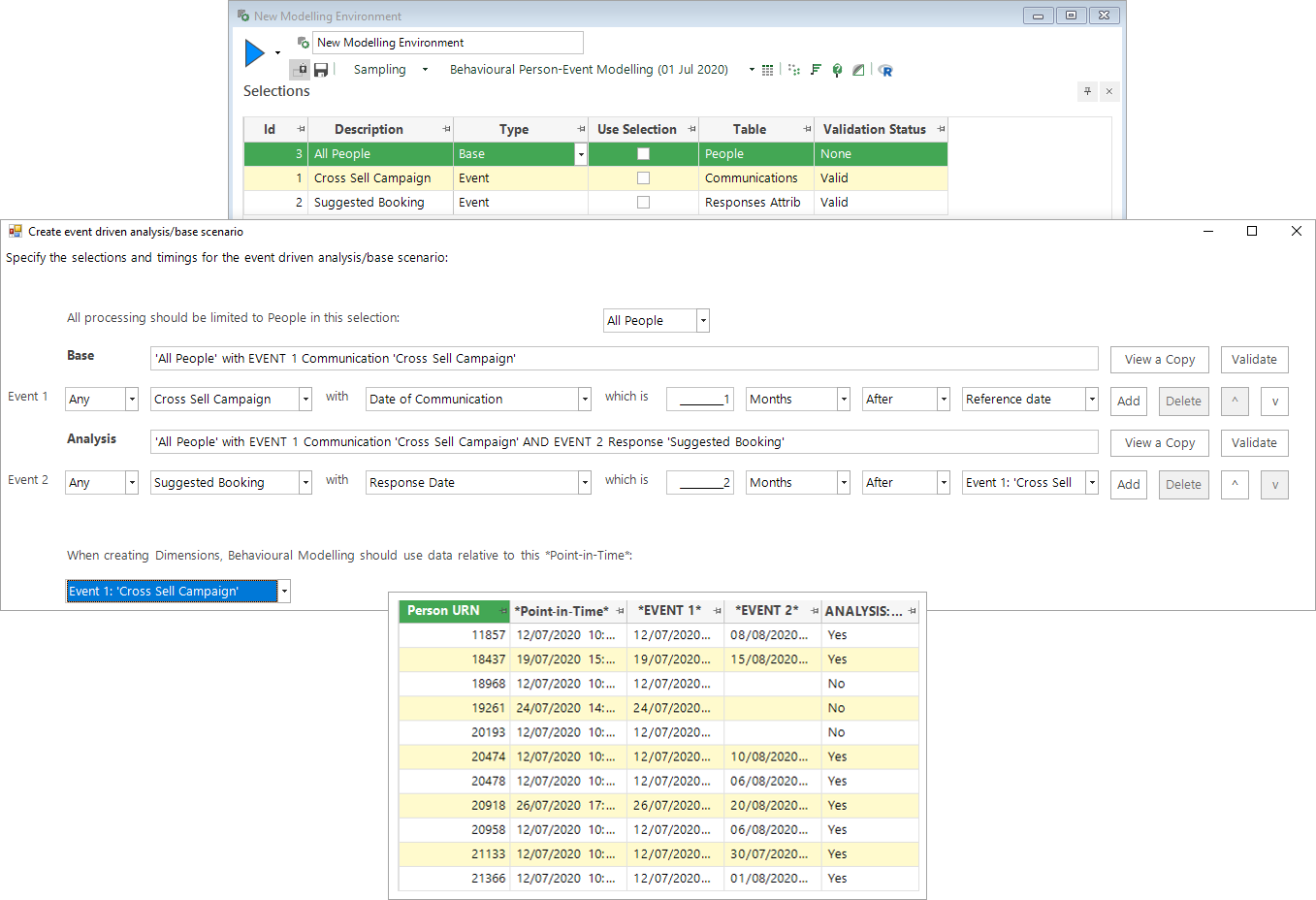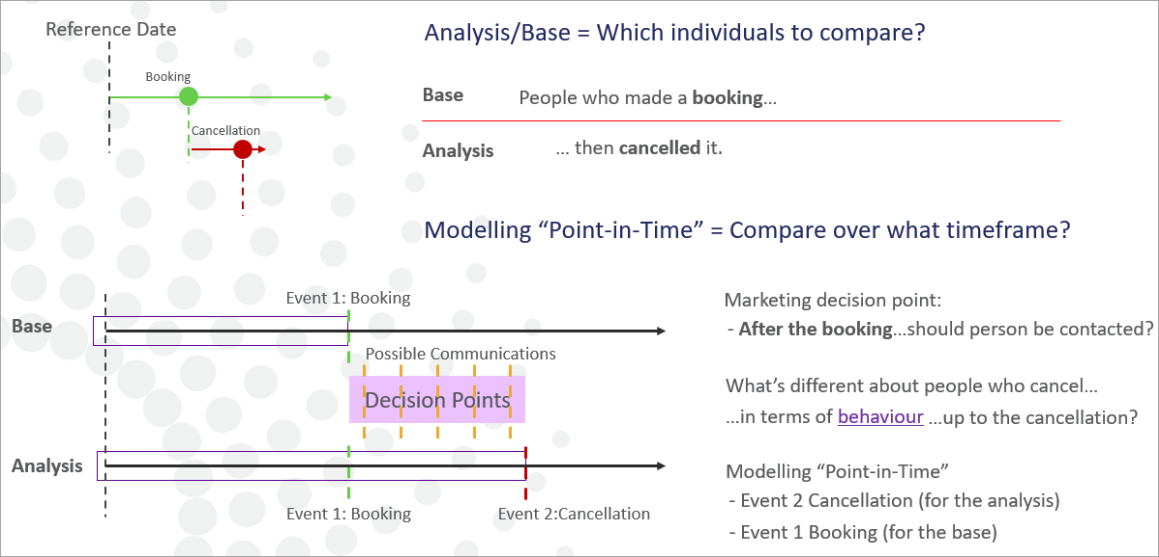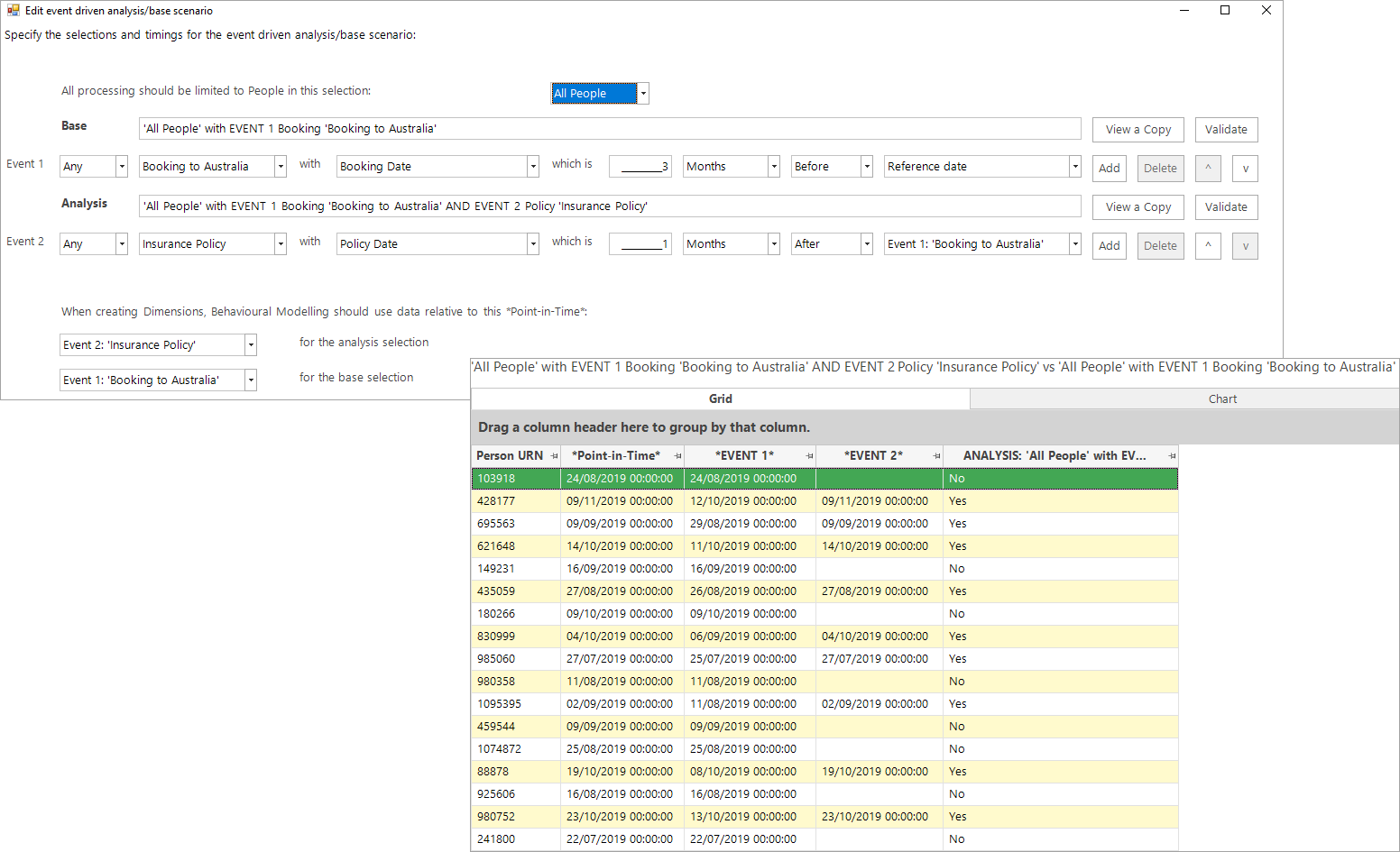Behavioural modelling - scenarios
In all cases (including standard modelling), the Modelling Environment identifies the differences between two groups of customers - the Analysis and Base - and uses these differences to build a model that predicts who is most likely to be in the analysis selection.
For example, in a simple campaign response scenario, the Analysis selection might be people who both received the campaign and responded; they could be compared against a Base selection of people who just received the campaign.
In an alternative scenario with 3 events - "communication-booking-cancellation" - the analysis selection of people who have experienced the complete sequence could be compared against a base selection of:
-
people who just received the communication or
-
people who received the communication, booked a holiday (but didn't cancel)
The latter would focus on what is different about people who ultimately cancel.
Essentially the definition of the modelling analysis/base scenario involves drawing a line part way through the sequence, such that the model will identify what is different about people who complete the sequence rather than stop short of the line.
Modelling point-in-time
Once you have identified the analysis and base customer selections, you then need to specify the modelling "point-in-time”. It is the behaviour up to this time point that is analysed when determining the differences between the analysis and base selections. The choice of this time point depends on what marketing intervention is planned and, therefore, what customer behaviour is available on which to make your marketing decisions.
There are two main types of scenario:
-
Firstly, where customers are responding to some existing marketing communication.
-
Secondly, where customers are making some spontaneous action, which a possible marketing communication could be designed to encourage/discourage.
Let's consider each type of scenario in turn.
Modelling scenario 1: Campaign response
In the first type of scenario, there is an existing marketing communication, and the purpose of modelling is to gain insight from customer behaviour up to the date of the campaign in order to improve your decision of who to include in the campaign next time.

The model might, for example, identify that people who have recently made a booking are unlikely to respond since they already have a holiday booked. In this case the modelling time point would be Event 1.

The data grid confirms that the point in time used for modelling corresponds with the time of Event 1 for people in both the analysis and base groups.
Modelling scenario 2: Spontaneous action
In the second type of scenario, there is no existing communication but, instead, there is the possibility of sending a communication to people who look like they might cancel. The sequence here might be - make a booking...take out insurance...cancel.

Here you need to understand the behaviour right up until the date people cancel. For example, a model might identify that the people who cancel have been very active in the days leading up to cancellation - perhaps checking out reviews on the website, or contacting a call centre.
In this case, your modelling time point needs to be set at Event 2 - i.e. the cancellation date - to examine behaviour immediately before cancellation. This creates a need for additional information about people in your Base selection, to specify the behaviour to examine since, by definition, they do not have a cancellation date. In the user interface, you should pick one of the earlier events (such as the Booking Date).
The data grid below shows that the point in time is:
-
Policy Date from Event 2 - for people in the Analysis group
-
Booking Date from Event 1 - for people with no insurance policy.

For related topics see Behavioural modelling - setting up the environment